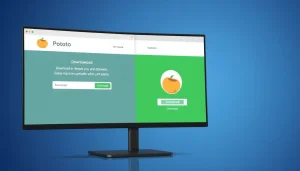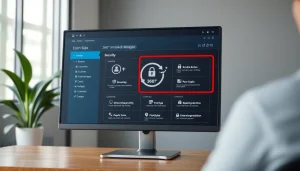Enhancing Healthcare Through Data: Insights from www.informaticsview.com
Understanding Health Informatics
As we step further into the digital age, the field of health informatics emerges as one of the most dynamic areas influencing modern healthcare. Health informatics centers around leveraging technology and data to enhance patient care and streamline various processes within healthcare systems. In practical terms, it involves the combination of information technology, data management, and healthcare practices, aiming to improve efficiencies across the continuum of care. By utilizing a robust framework that includes electronic health records, clinical decision support systems, and telemedicine, health informatics promises transformative potential for better health outcomes. One valuable resource for exploring these concepts is www.informaticsview.com, which delves into various dimensions of informatics in health settings.
What is Health Informatics?
Health informatics can be defined as the interdisciplinary field that utilizes core data and information technologies to advance patient care and enhance the delivery of healthcare services. Rooted in computer science, information technology, and health care, health informatics specializes in transforming data into actionable knowledge, providing healthcare professionals with the necessary tools to make informed decisions. By seamlessly integrating clinical practices with information systems, informatics ultimately enhances efficiency, promotes accurate diagnoses, and fosters better patient engagement.
The Role of Technology in Healthcare
The integration of technology into healthcare—through informatics—has fundamentally altered how medical information is created, stored, transmitted, and utilized. Technologies such as electronic health records (EHRs), telehealth solutions, and mobile health applications have not just improved operational efficiencies; they have also redefined patient experiences. Key benefits include:
- Enhanced Accessibility: Technology enhances patient access to health services, including telemedicine solutions that offer virtual consultations.
- Improved Data Management: Utilizing EHRs allows for systematic, organized data management, making patient history readily available to healthcare providers.
- Data-Driven Decision Making: Health informatics facilitates clinical decision support systems (CDSS) that provide actionable insights based on real-time data analytics.
Key Terminologies in Informatics
Understanding health informatics also involves grasping key terminologies that frequently appear in this domain:
- Electronic Health Records (EHRs): Digital versions of patients’ paper charts, which contribute to a unified patient record.
- Clinical Decision Support Systems (CDSS): IT systems designed to assist healthcare providers in making clinical decisions.
- Telemedicine: The use of telecommunication technologies to provide remote clinical services.
- Health Information Exchange (HIE): The electronic sharing of health-related information among organizations.
Applications of Informatics in Healthcare
Electronic Health Records (EHRs)
EHRs have revolutionized the way healthcare providers document and access patient information. Unlike traditional paper records, EHRs centralize all patient information, making it accessible in real-time. This advancement dramatically improves diagnosis accuracy, reduces duplication of tests, and empowers patients to take control of their healthcare journeys. Furthermore, the meaningful use of EHRs promotes better coordinated care and minimizes the risk of medical errors.
Clinical Decision Support Systems (CDSS)
CDSS are integral to modern healthcare as they assist clinicians in making informed decisions about diagnoses and treatment options. By analyzing data from varied sources, CDSS can recommend evidence-based paths for treatment, thus improving both patient outcomes and the quality of care. Different types of CDSS include alert systems that notify physicians about potential drug interactions and diagnostic support tools that suggest probable diagnoses based on patient data.
Telemedicine: Extending Care Access
Telemedicine has gained significant traction, particularly in recent years as a solution to healthcare access issues, especially during the COVID-19 pandemic. Through video conferencing and remote monitoring technologies, patients can receive consultations without the need for travel. This enhances patient engagement and supports continuity of care, especially for those living in rural or underserved areas. Additionally, telemedicine has been shown to reduce costs associated with in-person visits, making healthcare more affordable.
Challenges in Implementing Informatics
Data Privacy and Security Concerns
As with any field reliant on technology, data privacy and security are paramount. The sensitive nature of health information means that protecting against breaches is critical. Cybersecurity measures must be stringent, and organizations must comply with regulations like HIPAA to protect patient information. Regular audits, staff training, and the implementation of robust encryption technologies are essential strategies for mitigating these risks.
Integration of Systems and Processes
Integrating disparate health information systems can pose significant challenges. Organizations often utilize various software solutions that may not communicate effectively with one another. This lack of interoperability can lead to fragmented care and hinder data sharing. To address this, healthcare organizations require a thorough evaluation of existing systems and investments in interoperable technologies that facilitate seamless data exchange across platforms.
Training Healthcare Professionals
The rapid evolution of health informatics demands that healthcare professionals continuously develop their skills to keep pace with changing technologies and practices. Effective training programs are vital to ensure that staff members can fully leverage informatics tools. Organizations should implement ongoing education, workshops, and simulated training scenarios to prepare staff for utilizing these innovations effectively while enhancing clinical workflow efficiency.
Future Trends in Health Informatics
Artificial Intelligence and Machine Learning
Artificial intelligence (AI) and machine learning (ML) have begun to revolutionize healthcare by analyzing vast datasets to extract insights that can improve patient care and operational efficiencies. AI applications range from predictive analytics that foresee patient deteriorations to chatbots that assist patients in managing their health queries. The potential of AI in diagnosing diseases at an early stage or suggesting tailored treatment plans based on individual patient data represents the forefront of health informatics innovations.
Wearable Health Technology
The proliferation of wearable devices is altering how patients manage their health. These tools allow for real-time monitoring of vital signs, physical activity, and other health metrics. Healthcare providers can leverage this data to enhance patient engagement and encourage proactive healthcare management. Wearable technology, when integrated with health informatics systems, can lead to improved chronic disease management and enable personalized interventions, ultimately enhancing patient outcomes.
Increasing Role of Telehealth Solutions
The telehealth sector is expected to continue expanding as more patients prefer virtual care options due to convenience and flexibility. With the rise of telehealth solutions, healthcare providers must develop frameworks to ensure that remote consultations are as effective as in-person visits. Advances in technology such as 5G connectivity will further enhance the capabilities of telehealth, enabling high-quality video interactions and improving the patient experience dramatically.
Measuring the Impact of Informatics
Key Performance Metrics
Measuring the impact of health informatics requires robust performance metrics that can accurately reflect improvements in care delivery. Some key metrics include:
- Patient Satisfaction Scores: Measuring how patients rate their experiences in relation to digital health interventions.
- Clinical Outcomes: Evaluating trends in patient health following the implementation of informatics solutions.
- Operational Efficiency: Assessing improvements in workflow times and cost savings as a result of informatics technologies.
Case Studies on Successful Implementation
Numerous case studies exemplify the successful deployment of health informatics systems. For instance, a notable case is the implementation of EHRs at a major healthcare provider which resulted in reduced medication errors by approximately 30%. Another example includes a mid-sized hospital utilizing CDSS, which led to a marked increase in the accuracy of diagnoses and a decrease in unnecessary tests through evidence-based recommendations.
Evaluating Patient Outcomes and Satisfaction
Ultimately, the successful implementation of informatics should reflect positively on patient outcomes and satisfaction. Evaluating this can involve surveys, patient interviews, and analysis of health outcomes pre- and post-intervention. Monitoring these aspects not only assists in refining health informatics practices but also provides insights into patients’ perceptions of care delivery, thereby directly influencing quality improvement efforts.














Post Comment